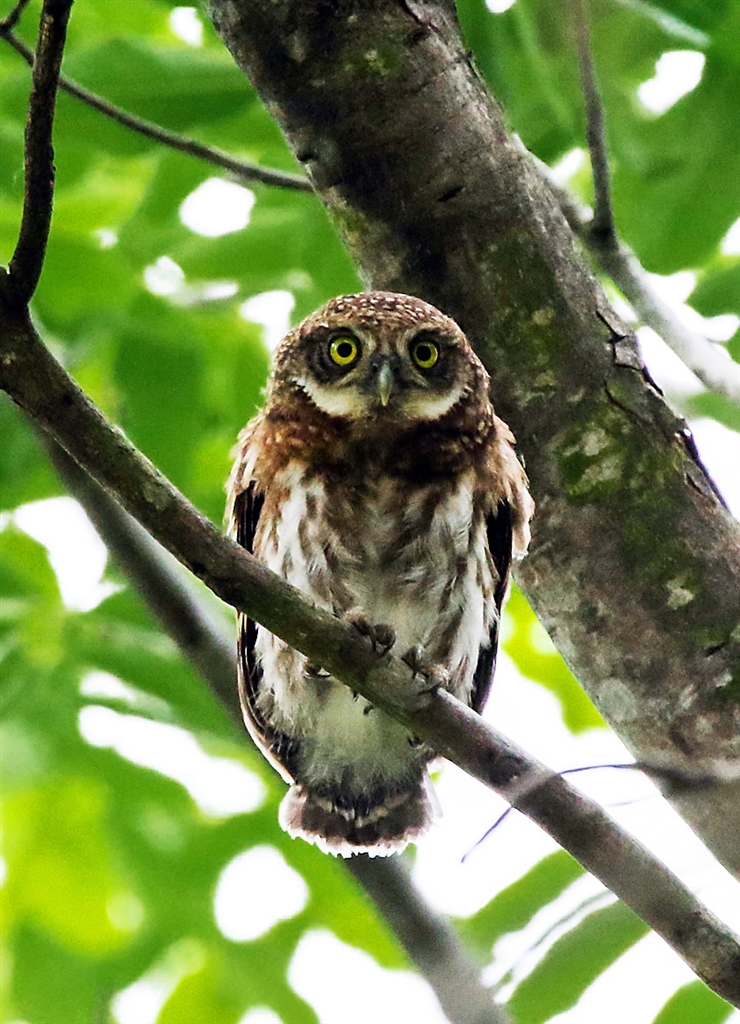
For the past couple of weeks, an unexpected visitor decided to raise its offspring in a community park in downtown Shenzhen. Known as Xiangmi Park, this place is a favorite for newlyweds to have their photo-shoots due to the beauty of its landscape. An uncountable amount of tree species there serve as the home for a dozen local birds. Recently, the large trees served as home for a mother Asian barred owlet (Glaucidium cuculoides) and her two youngsters. This fabulous species of owl is decorated all over its body with a beautiful light brown barred pattern. Around its amazing big yellow eyes are astonishing white eyebrows. It has a yellow beak, yellow legs with very sharp claws and a short tail; its throat and breast have white patches. The Asian barred owlet can grow up to only 25 centimeters in length, but is still considered to be a fairly large owlet, giving us an idea of how small owlets usually are. They are distributed all over China and most Southeast Asian countries including Vietnam, Laos and Cambodia. It is considered a resident species, meaning it does not have a migratory pattern. This beautiful bird is mostly active during the day. It can feed on almost any species of animal that is available to hunt, preferably large insects like cicadas or grasshoppers, but also lizards, mice, frogs, or even small birds it catches while in flight. The breeding season of the Asian barred owlet starts around April and May, when couples will look for a small cavity in a tree, sometimes even taking the homes of some other bird species like woodpeckers or barbets. They will lay up to four eggs per clutch; females will be in charge of incubating and feeding the newborns. Although this fantastic bird species is not threatened, it is important to protect them as part of our beautiful ecosystem. This is a species that belongs to this part of the world and nowhere else, so we are lucky to be able to enjoy their beauty in our diverse city of Shenzhen. 2022.05.23 An Asian barred owlet is seen between tree branches in Xiangmi Park in Futian District. | 
